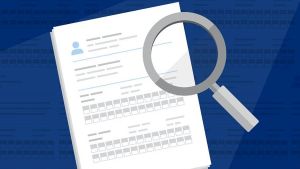JAKARTA - Gabriella Batalha didn't think much of it when she saw she had logged out of her Instagram account - until the next day when she found her account flooded with sensationalist posts promoting high yielding cryptocurrency investments.
In order to recover his account, the 27-year-old lawyer from Rio de Janeiro had to pay 200 reais (IDR 600 thousand) to a "consultant" he found on YouTube, a man he said could be the fraudster himself.
"It took me two days to recover my account, and I feel very stressed," he said, quoted by Reuters.
Batalha isn't the only one experiencing this. Online fraud in Brazil jumped 65% last year to more than 200,000, according to data from the Brazilian Public Security Yearbook published last month.
Across Latin America, online fraud and cyberattacks are at "highest levels," said cybersecurity firm Tenable, which is a pressing problem for this well-connected region.
Latin America's recent advances in technology inclusion have created new opportunities for fraud, experts say, with the pandemic fueling a trend towards mobile banking and shopping using payment systems like PIX which are hugely popular in Brazil.
The region is increasingly connected online. By 2022, 77.9% of the population in Latin America and the Caribbean use the internet, up from 74.8% the previous year and above the global rate of 66.3%, according to the International Telecommunication Union (ITU).
Nearly half of Latin America's internet users spend an average of six hours a day on social media, according to a report from cybersecurity firm Kaspersky.
"The increasing acquisition of new technology has made it easier for cybercriminals to carry out more frequent attacks," said Kerry-Ann Barrett, a cybersecurity specialist at the Organization of American States (OAS).
"These threats are increasingly complex and costly, costing the region billions each year," Barrett said.
In Peru, for example, a group of fraudsters managed to trick a construction company out of more than $62,000 by pretending to be a bank via a fake website, according to the attorney general's office.
In Mexico, scammers have targeted unsuspecting victims with fake job offers via text messages, only to lure victims into sharing sensitive personal data, according to media reports.
"Latin America is a priority target because it has a highly connected population, which means that they are constantly exposed," said Claudio Martinelli, Latin America regional director for Kaspersky.
Institutions and governments are also more vulnerable than other parts of the world. In a ranking of 93 countries on cyberthreat risk compiled by fraud prevention software SeON, nine out of 10 Latin American countries fall into the bottom half.
SEE ALSO:
Three Latin American countries - Honduras, Nicaragua and Venezuela - are on the list of the 10 countries with the highest risk of cyberthreats.
Meanwhile, the region has the highest share of unprotected data in the world in 2022, Tenable said, leaving the company vulnerable to threats such as ransomware, the type of attack that locks up computers and then demands money to free them.
Ransomware is responsible for six out of every 10 attacks in 2022, including an attack by Russian hackers on the Costa Rican Ministry of Finance, which demanded $10 million (IDR 151 billion).
"Latin America's ability to protect itself from future attacks is hampered by a lack of regulation and legal investigation," said Marcos Simplicio, a professor specializing in cybersecurity at the University of Sao Paulo.
"Virtual crime is no different from physical crime," he said. "As long as it's profitable, and if the chance of punishment is small, then this will continue."
The English, Chinese, Japanese, Arabic, and French versions are automatically generated by the AI. So there may still be inaccuracies in translating, please always see Indonesian as our main language. (system supported by DigitalSiber.id)


















